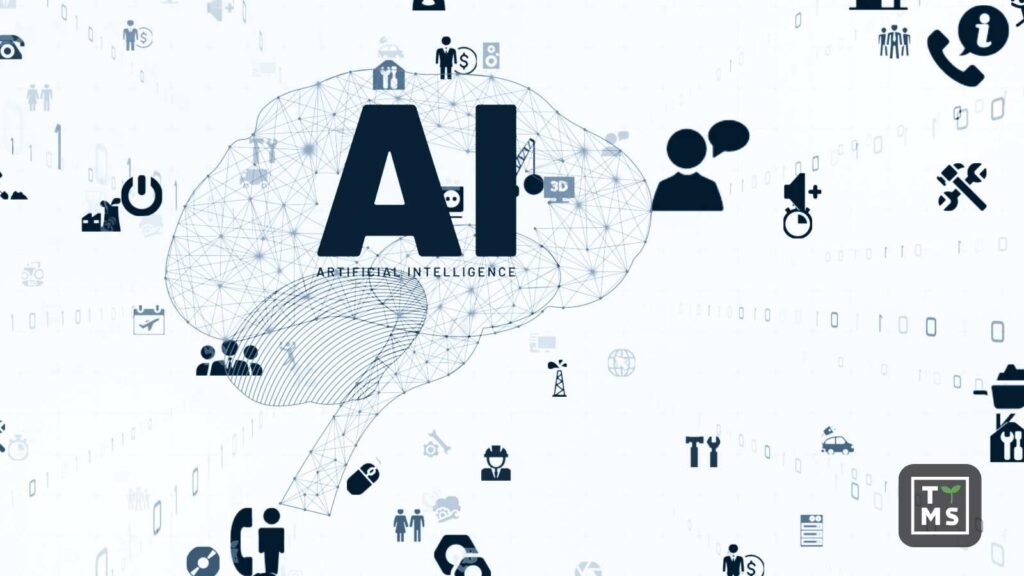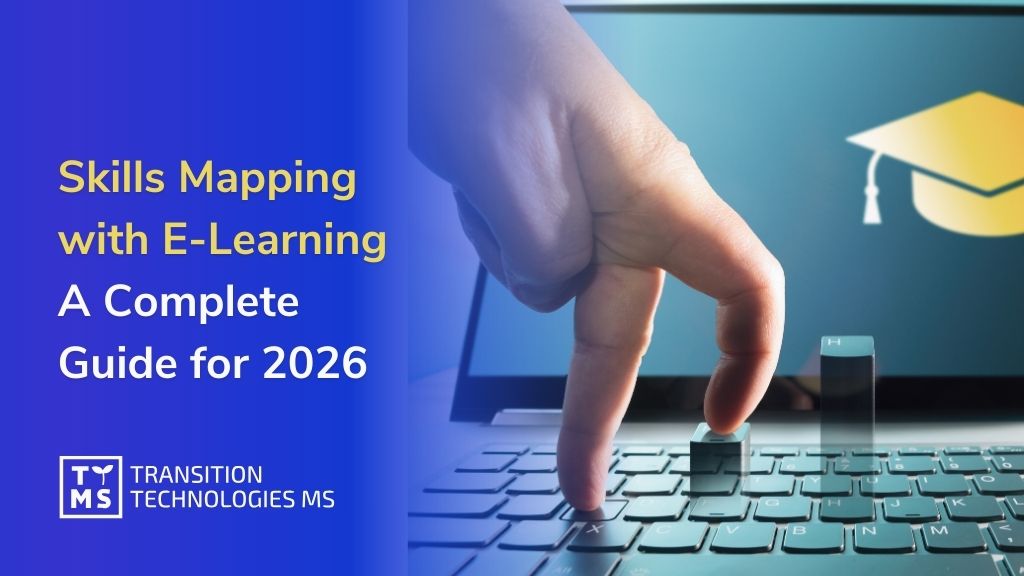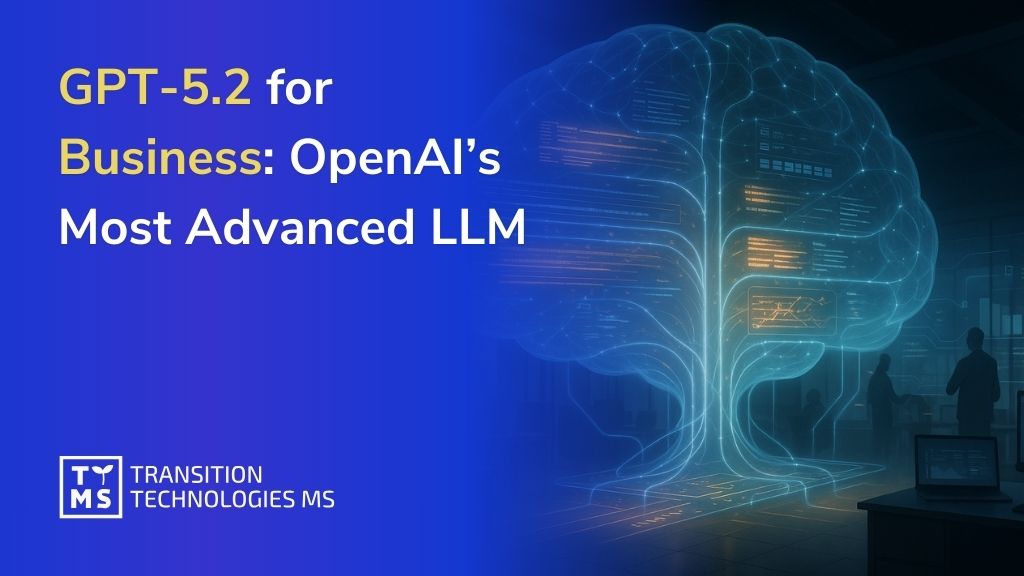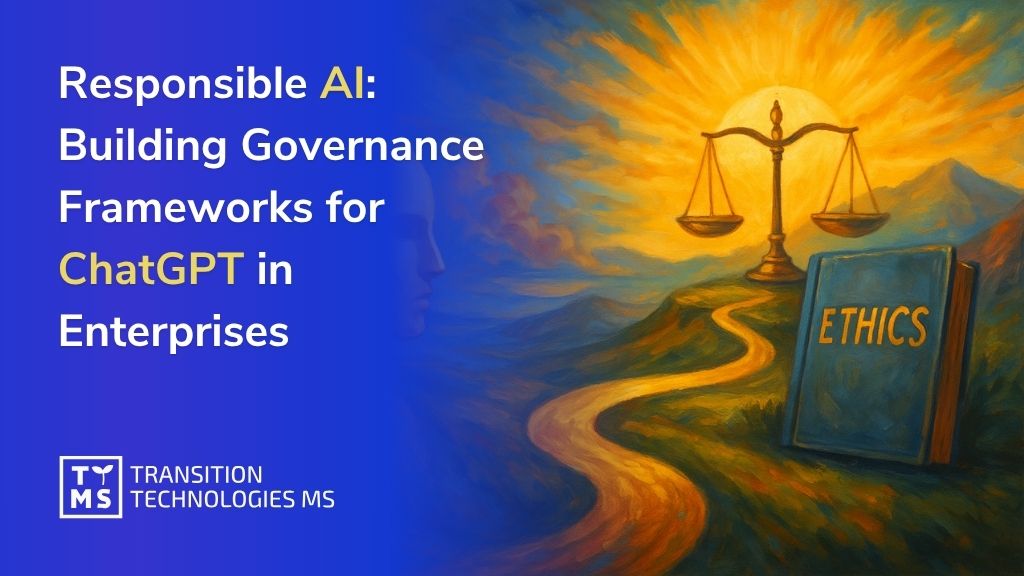
Not so long ago, employee training meant thick manuals, static presentations, and hours spent in meeting rooms with a trainer. But times have changed. Today, companies aren’t just wondering if they should bring AI into learning and development — they’re asking how to do it smartly.
In a fast-moving world where business needs evolve month by month, more organizations are turning to AI to make learning more flexible, targeted, and scalable.
Because when training feels relevant, adaptive, and easy to access — it actually works.
So here’s the real question: Is your company ready to tap into the potential of AI to help your people grow?
1. The Potential of AI Tools for Training and Development
The integration of AI tools for training and development represents a paradigm shift in how organizations approach employee learning. These powerful technologies don’t simply automate existing processes—they fundamentally transform the entire learning ecosystem by introducing capabilities that weren’t previously possible at scale.
1.1 Understanding AI in Learning and Development
AI in L&D encompasses a wide range of technologies designed to enhance how knowledge is created, delivered, and absorbed. At its core, AI learning and development tools leverage machine learning algorithms to analyze data patterns, adapt to user behaviors, and deliver increasingly relevant content to learners. These systems continuously improve by processing feedback and interaction data.
The strategic implementation of AI tools for learning and development enables organizations to move beyond the traditional one-size-fits-all approach. For instance, natural language processing can power intelligent content recommendations while predictive analytics identifies skill gaps before they impact business outcomes. Computer vision technologies even allow for analyzing learner engagement during video-based training.
TTMS has observed that organizations implementing AI L&D tools typically experience 40-60% improvements in training completion rates and knowledge retention. This happens because these systems can identify precisely when learners are struggling and provide targeted interventions before disengagement occurs. Rather than replacing human trainers, AI augments their capabilities, handling repetitive tasks while allowing L&D professionals to focus on high-value strategic work.
The most successful implementations start with clear learning objectives and gradually incorporate AI capabilities that directly address specific organizational challenges.
2. Benefits of Integrating AI in Training Programs
The strategic implementation of AI in training and development is revolutionizing how organizations approach workforce education. With AI training tools becoming increasingly sophisticated, companies are discovering numerous advantages that extend far beyond simple automation. Let’s explore these benefits in detail.
2.1 Accelerated Content Creation and Translation
AI for training and development has dramatically transformed content creation timelines. What previously took weeks of instructional design can now be accomplished in days or even hours. AI training tools can generate initial drafts of training materials, repurpose existing content into different formats, and even create simulations based on company-specific scenarios.
Content translation, historically a major bottleneck for global organizations, has been streamlined through AI-powered solutions. These systems can instantly translate training materials into dozens of languages while maintaining contextual accuracy and cultural nuances. TTMS has observed that companies implementing these solutions report 70% faster deployment of global training programs.
Organizations leveraging AI employee training for multilingual content have seen particularly impressive results in technical fields where specialized terminology presents unique challenges. The technology continuously improves translations based on industry-specific datasets, ensuring consistency across all learning materials.
2.2 Smarter Content Delivery through AI
AI has fundamentally changed how training content reaches learners. Rather than pushing standardized materials to everyone simultaneously, AI systems analyze numerous factors to determine optimal delivery timing, format, and scope for each individual.
These systems track learner behavior patterns to identify when employees are most receptive to new information. For example, AI might recognize that certain team members engage better with training during morning hours or after completing specific tasks, and adjust delivery accordingly. The result is significantly higher completion rates and knowledge retention.
Content sequencing has also improved through intelligent recommendation engines similar to those used by streaming platforms. By analyzing which learning paths lead to the best outcomes for similar employees, these systems can suggest optimal progression routes through complex training materials.
2.3 Personalized and Adaptive Learning Experiences
Perhaps the most transformative benefit of AI in training and development is the ability to truly personalize learning at scale. Traditional approaches forced organizations to choose between customized experiences (expensive) or standardized programs (ineffective). AI eliminates this compromise.
Modern AI learning platforms continuously assess learner competencies, adjusting content difficulty, pace, and examples based on individual progress. This dynamic approach ensures employees remain in their optimal learning zone—challenged enough to remain engaged but not overwhelmed to the point of frustration.
The customization extends to content formats as well. AI can identify whether a particular employee learns better through visual demonstrations, written instructions, or interactive exercises, then prioritize those formats accordingly. This adaptivity has proven particularly valuable for technical skill development where learning approaches vary significantly among individuals.
2.4 Enhanced Learner Engagement and Interactivity
AI employee training systems have transformed passive learning experiences into highly interactive journeys. Gamification elements powered by AI provide meaningful challenges calibrated to each learner’s skill level, while virtual role-playing scenarios adapt in real-time based on learner decisions and responses.
These interactive elements generate rich engagement data that AI systems analyze to identify potential knowledge gaps or misconceptions. When patterns emerge suggesting confusion about specific concepts, the system can automatically provide additional explanations or practice opportunities before the learner becomes disengaged.
Emotion recognition technologies integrated into video-based learning can even detect when learners appear confused or frustrated, triggering appropriate interventions. This level of responsiveness was previously impossible in traditional training environments.
2.5 Improved Cost and Time Efficiency
The economic benefits of integrating AI into training and development are significant. Organizations that adopt these technologies often report 30–50% reductions in training-related costs, while simultaneously enhancing learning outcomes. These savings are driven by factors such as faster content development, reduced reliance on live instruction, and minimized logistical expenses.
AI-powered onboarding systems are especially effective in cutting costs, as they can automate up to 80% of standard orientation tasks while delivering personalized experiences to new employees. This approach shortens onboarding timelines and helps new hires become productive more quickly.
Efficiency gains also extend to compliance training. AI systems can monitor regulatory updates in real time and automatically adjust learning content, ensuring that employees always have access to up-to-date, accurate information—without the need for constant manual revisions.

2.6 AI-Supported Role Evolution within L&D
Far from replacing L&D professionals, AI is elevating their roles to more strategic positions. By automating routine tasks like content updates, assessment grading, and basic question answering, these technologies free L&D teams to focus on high-value activities like learning strategy development and performance consulting.
This evolution requires L&D professionals to develop new competencies around AI implementation, ethical considerations, and strategic integration with business objectives. Those embracing this shift are finding themselves in increasingly influential positions within their organizations.
2.7 Automated Workflows and Task Management
Administrative efficiency represents another major benefit of AI training tools. These systems can automate enrollment processes, generate completion certificates, send targeted reminders to learners, and maintain comprehensive training records with minimal human intervention.
Compliance tracking, historically a labor-intensive process, has been particularly transformed. AI systems can monitor completion rates in real-time, automatically identify non-compliant employees, and generate appropriate notifications. This automation not only reduces administrative burden but also significantly improves compliance rates.
2.8 Advanced Data Analysis and Insights
The analytical capabilities of AI in training and development provide unprecedented visibility into learning effectiveness. These systems can correlate training activities with on-the-job performance indicators, helping organizations understand which learning experiences truly impact business outcomes.
Predictive analytics tools can identify employees at risk of knowledge gaps before those gaps impact performance. By analyzing patterns across thousands of learner interactions, these systems can recommend targeted interventions that prevent potential issues rather than simply reacting to them.
2.9 Virtual Assistants, Chatbots, and AI Coaching
AI-powered learning support systems have transformed how employees access help during the learning process. Virtual assistants can answer questions 24/7, provide clarification on complex concepts, and direct learners to relevant resources. This immediate feedback dramatically improves the learning experience compared to waiting for instructor responses.
More sophisticated AI coaching systems can provide personalized guidance throughout the learning journey. These tools analyze numerous factors—from quiz responses to practical application attempts—and offer tailored recommendations for improvement. Some advanced systems can even simulate conversation practice for customer service training or leadership development.
2.10 Innovative Uses of AI in Corporate Settings
Beyond traditional implementations, pioneering organizations are leveraging AI learning tools in increasingly creative ways to address complex development challenges.
Conflict Resolution and Emotional Intelligence Development
Several organizations are deploying sophisticated AI L&D tools to address the challenging area of workplace conflict and emotional intelligence. These systems analyze communication patterns, identify potential conflicts before they escalate, and provide tailored guidance for resolution. More importantly, they help employees develop emotional intelligence skills by providing private feedback on communication styles and suggesting alternative approaches for difficult conversations.
Predictive Career Pathing
AI learning and development tools are increasingly being used to create highly personalized career development journeys. These systems analyze thousands of career progression patterns within organizations to identify optimal development paths for individual employees based on their unique skills, interests, and performance indicators. By matching employees with precise learning experiences that align with both their aspirations and organizational needs, these systems create unprecedented alignment between individual development and business requirements.
Knowledge Retention Reinforcement
Addressing the challenge of post-training knowledge decay, several organizations have implemented AI systems that use principles of cognitive science to maximize retention. These platforms analyze individual learning patterns to determine optimal reinforcement timing and deliver micro-learning experiences that significantly improve long-term knowledge retention.
Immersive Simulations
The most sophisticated AI tools for training and development are creating unprecedented immersive learning experiences. Using technologies like natural language processing, computer vision, and generative AI, these systems create highly realistic scenarios that adapt in real-time to learner decisions. For example, sales professionals can practice complex negotiations with AI-powered virtual customers that demonstrate realistic emotional reactions and unpredictable objections, providing practice opportunities that were previously impossible outside of real customer interactions.
These innovative applications demonstrate the expanding possibilities of AI in L&D beyond simple automation or content creation. As these technologies continue to evolve, organizations that strategically implement them are creating significant competitive advantages through superior talent development capabilities.
3. Key Considerations and Future Outlook
As organizations increasingly adopt AI in training and development, several critical factors deserve careful attention to ensure successful implementation and sustainable results. Understanding these considerations will help learning leaders navigate the evolving landscape of AI training tools while maximizing their effectiveness.
3.1 Ethical Implementation and Governance
Organizations implementing AI for training and development must establish robust ethical frameworks governing these systems. Transparency around how AI evaluates learner performance, makes recommendations, or generates content is essential for maintaining trust. Employees need a clear understanding of when they’re interacting with AI versus human instructors, and how their learning data is being utilized.
Data privacy concerns require particular attention when deploying AI employee training systems. Organizations must implement strong safeguards protecting potentially sensitive information gathered during learning activities. This includes establishing clear data retention policies, anonymization practices, and appropriate access controls. TTMS recommends developing specific AI governance committees with cross-functional representation to oversee these critical aspects.
Algorithmic bias presents another significant challenge requiring proactive monitoring. Without careful oversight, AI training tools may unintentionally perpetuate existing biases or create new ones. Regular auditing of AI recommendations and outcomes across different demographic groups helps identify potential issues before they impact learning effectiveness or employee advancement opportunities.
3.2 Integration with Existing Systems and Workflows
The most successful AI training for employees doesn’t exist in isolation but integrates seamlessly with existing technology ecosystems and workflows. Organizations should prioritize solutions that connect with current learning management systems, talent management platforms, and performance evaluation tools. This integration enables comprehensive tracking of development activities and their impact on business outcomes.
Change management represents perhaps the greatest implementation challenge. Even the most sophisticated AI in training and development will fail without effective strategies for user adoption. Organizations should begin with clear communication about how AI will enhance (not replace) human capabilities, followed by phased implementation that demonstrates tangible benefits to both learners and L&D professionals.
3.3 Development of AI-Related Competencies
As AI transforms workplace learning, organizations must simultaneously develop AI literacy across their workforce. Employees need sufficient understanding of AI capabilities, limitations, and appropriate uses to effectively collaborate with these systems. This creates an interesting paradox where AI training tools are increasingly used to develop AI-related competencies.
L&D professionals require particular attention in upskilling initiatives. Their roles are evolving from content creators to learning experience architects who design effective human-AI collaborative learning environments. Organizations should invest in specialized development for these teams, focusing on competencies like AI implementation oversight, ethical governance, and strategic integration with business objectives.
3.4 Measurement and Continuous Improvement
Measuring the effectiveness of AI for training and development requires sophisticated analytics beyond traditional completion metrics. Organizations should establish comprehensive dashboards tracking not only learning outcomes but also their correlation with business performance indicators. This connection between learning activities and business results provides the strongest justification for continued investment in AI-powered learning.
Continuous improvement mechanisms should be built into any AI implementation from the beginning. These systems improve through usage, making it essential to establish feedback loops that capture both quantitative performance data and qualitative user experiences. Regular review cycles analyzing this information help organizations continuously refine their approach and maximize return on investment.
3.5 Future Outlook: Emerging Trends and Opportunities
Looking ahead, several emerging trends will likely shape the evolution of AI in training and development
Multimodal Learning Systems
Next-generation AI training tools will seamlessly integrate multiple learning modalities (text, audio, video, simulation, AR/VR) into cohesive experiences that adapt to individual learning preferences. These systems will automatically determine the optimal combination of modalities for each learner and concept, creating unprecedented personalization at scale.
Emotion-Aware Learning
Advanced AI employee training systems will increasingly incorporate emotional intelligence capabilities, recognizing and responding to learner emotional states. These systems will detect frustration, confusion, boredom, or engagement through multiple inputs (facial expressions, voice tone, interaction patterns) and adjust content delivery accordingly to optimize the learning experience.
Collaborative AI Learning Environments
Rather than focusing exclusively on individual learning journeys, future AI systems will facilitate collaborative learning by identifying optimal peer pairings, facilitating group problem-solving, and providing targeted interventions to improve team dynamics. These capabilities will be particularly valuable for developing complex collaborative skills that require interaction with others.
Knowledge Network Development
Future AI in training and development will focus not just on individual competency development but on optimizing organizational knowledge networks. These systems will map knowledge flows across organizations, identify critical knowledge bottlenecks, and recommend strategic interventions to improve collective intelligence rather than just individual capabilities.
Human-AI Teaching Partnerships
The most sophisticated implementations will create effective partnerships between human instructors and AI systems, with each handling components that leverage their unique strengths. AI might manage personalized practice sessions and basic question answering, while human instructors focus on complex concept explanation, motivation, and addressing unique learning challenges.
3.6 The Path Forward
As organizations navigate this rapidly evolving landscape, maintaining balance between technological innovation and human connection will be critical. The most successful implementations of AI in training and development will not simply automate existing approaches but fundamentally reimagine how learning happens within organizations.
Organizations should begin with clear learning strategies aligned with business objectives, then thoughtfully implement AI capabilities that directly support these strategies. Starting with well-defined use cases that address specific challenges helps demonstrate value while building organizational capability for more sophisticated applications over time.
The future of AI training tools is not about replacing human elements in learning but about amplifying human potential through increasingly intelligent technological partnerships. Organizations that approach implementation with this mindset will create significant competitive advantages through superior talent development capabilities.

4. Turn AI Tools for Training and Development into Real Results — With TTMS by Your Side
Implementing AI tools for learning and development requires more than simply purchasing new technology—it demands strategic vision, technical expertise, and change management capabilities. Organizations achieving the greatest success typically partner with experienced implementation experts who understand both the technological and human dimensions of this transformation.
4.1 Why Expert Partnership Matters
The landscape of AI L&D tools is evolving rapidly, making it challenging for internal teams to stay current with emerging capabilities and best practices. Working with a specialized partner like TTMS provides access to continuously updated expertise and implementation methodologies refined through multiple successful deployments across industries.
Many organizations struggle to connect AI learning initiatives to measurable business outcomes. TTMS approaches implementation with a clear focus on business impact, helping clients define specific success metrics and establish measurement frameworks that demonstrate tangible value. This business-first approach ensures AI in L&D investments generates meaningful returns rather than simply introducing interesting technology.
4.2 TTMS’s Comprehensive Approach to AI Learning Solutions
As a global IT company with extensive experience in digital transformation, TTMS brings unique capabilities to AI learning and development implementations. The company’s approach integrates technical expertise with deep understanding of learning methodologies and organizational change management.
TTMS offers end-to-end solutions covering the entire AI learning transformation journey:
- Strategic Assessment and Roadmap Development: Before recommending specific AI tools for training and development, TTMS conducts thorough assessments of current learning ecosystems, organizational readiness, and specific business challenges. This diagnostic approach ensures solutions address genuine needs rather than implementing technology for its own sake. The resulting roadmap provides a clear implementation sequence aligned with organizational priorities and capabilities.
- Custom AI Learning Solution Development: While many providers offer one-size-fits-all solutions, TTMS specializes in developing customized AI learning platforms tailored to each organization’s unique requirements. As certified partners of technology leaders including Microsoft, Salesforce, and Adobe Experience Manager, TTMS creates solutions that leverage these powerful platforms while addressing specific learning challenges.
- The company’s E-Learning administration services ensure seamless implementation and ongoing management of AI learning platforms. This includes content migration, user management, and integration with existing HR and talent management systems—critical factors for successful adoption that are often overlooked.
- Process Automation for Learning Operations: Beyond learner-facing applications, TTMS’s expertise in process automation helps streamline learning operations through. These automation capabilities are particularly valuable for compliance training management, certification tracking, and skills gap analysis.
- Data Integration and Analytics: The true power of AI in L&D emerges through comprehensive data analytics that connect learning activities to business outcomes. These tools provide unprecedented visibility into learning effectiveness and its impact on operational performance.
Additional we offer:
- E-learning consulting empowers organizations to design scalable, high-impact digital learning solutions tailored to business goals. Consultants assess existing learning ecosystems, recommend optimal LMS or LXP platforms, and define content strategies based on target audience needs and learning analytics. They support the integration of AI, microlearning, gamification, and other modern technologies to boost engagement and retention. This strategic guidance ensures faster implementation, better ROI, and measurable improvements in workforce performance.
- E-learning development team outsourcing provides companies with immediate access to a skilled, cross-functional team specializing in instructional design, multimedia production, and learning technologies. Instead of building in-house capabilities, organizations can scale faster by leveraging external experts to design, develop, and deliver high-quality digital training. The outsourced team can handle end-to-end development—from needs analysis and storyboard creation to SCORM-compliant modules and platform integration.
4.3 Getting Started with AI Learning Transformation. Where should we begin?
For organizations beginning their journey with AI tools for learning and development, TTMS recommends a phased approach:
- Discovery Workshop: Begin with a focused session exploring current learning challenges, business objectives, and potential AI applications. This workshop helps identify high-value use cases and build internal alignment.
- Pilot Implementation: Start with a contained implementation addressing a specific learning challenge. This approach demonstrates value quickly while building organizational experience with AI learning tools.
- Measurement Framework: Establish clear metrics connecting learning activities to business outcomes before expanding implementation. This foundation ensures continued investment generates demonstrable returns.
- Scaled Deployment: With proven results from the pilot, expand implementation across additional use cases and organizational areas, applying lessons learned to optimize adoption.
- Continuous Optimization: Implement regular review cycles to assess effectiveness and incorporate emerging AI capabilities that address evolving learning needs.
With the pace of change accelerating, organizations must prioritize workforce development to stay relevant and competitive.By working with TTMS to introduce AI-powered tools for training and development, companies can reshape their learning environments, speed up skill-building, and gain a lasting competitive edge through stronger talent capabilities.
As AI continues to redefine how we learn at work, the real question isn’t if we should use these technologies — but how to do it right. With TTMS’s deep expertise in both the tech and human sides of learning transformation, your organization can move forward with confidence, turning the potential of AI into real, measurable business impact. Contact us now!






